November 21, 2023 – Majorville, Alberta
Pre-winter blues happen to many of us this time of year. Reduced daylight, advancing cold, and withering plant life can trigger emotional gloominess. I felt the symptoms creeping in last week, so I decided to do something about it. Fortunately, I found a cure.
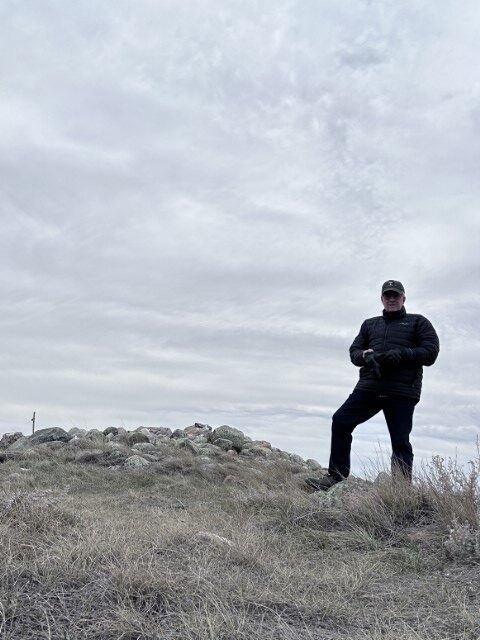
The remedy didn’t come in the form of pills or elixirs; I didn’t find it at the local pharmacy. For me, Pre-Winter Blues medicine was in this pile of rocks situated on top of a remote hill in southern Alberta.
I read about Iniskim Umaapi (the Majorville Medicine Wheel) recently and had made up my mind to see it someday. When I woke up this morning, feeling a little blue, I decided that today was that day.
Iniskim Umappi is a Blackfoot Nation archeological site located in an unpopulated grassland area south of Bassano, AB. The site is 5200 years old. I was determined to see it today, before it gets any older.
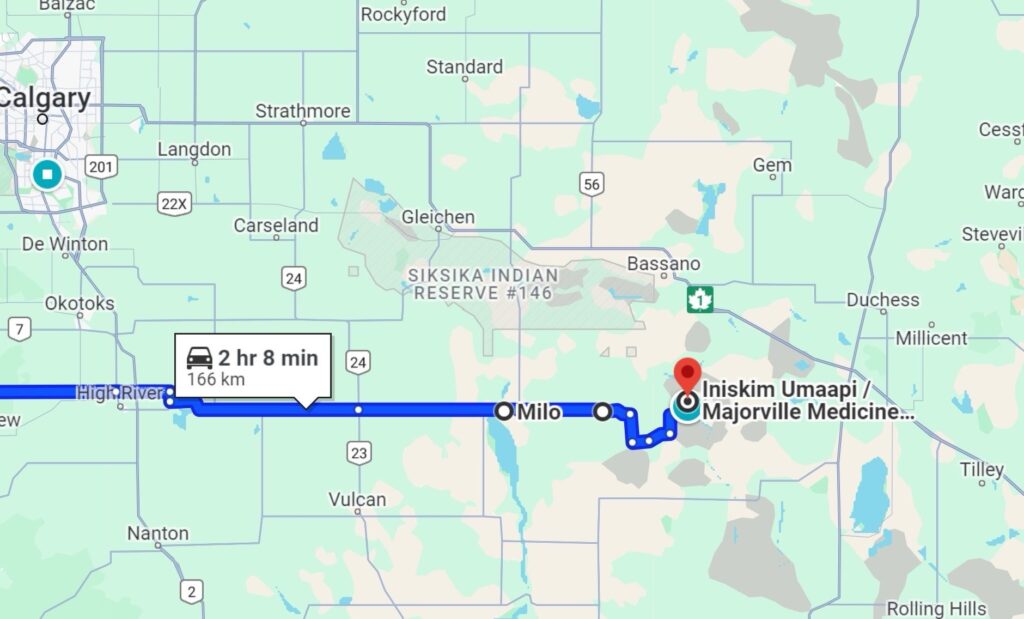
I was out the door at 5:30AM, hoping to arrive at the Medicine Wheel in time to witness the sun rise. I would have made it on time, but a pause at Tim Hortons for coffee, and several stops to photograph this magnificent pre-dawn spectacle slowed me down.
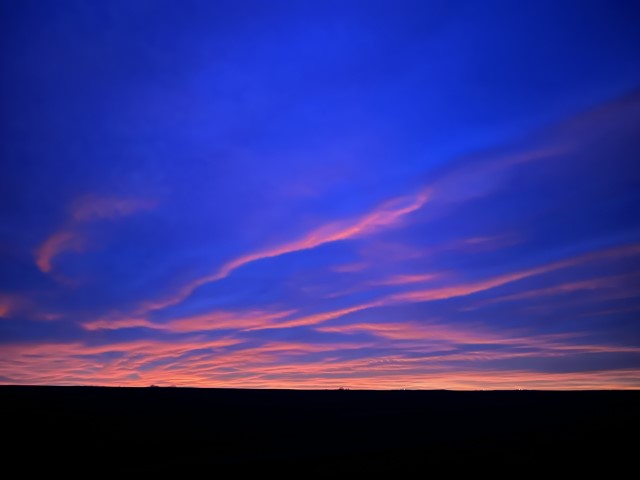
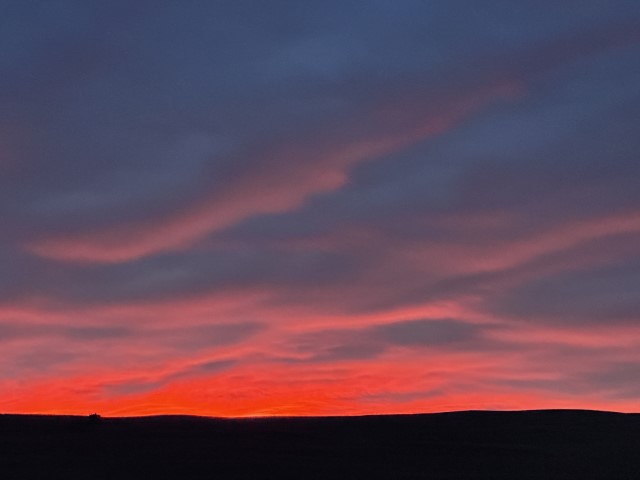
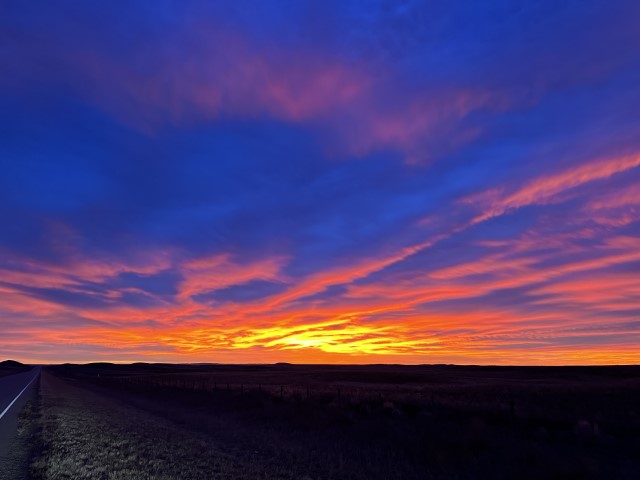
My journey time was further delayed by faulty GPS coordinates and impossibly rough roads for the last 25 km.
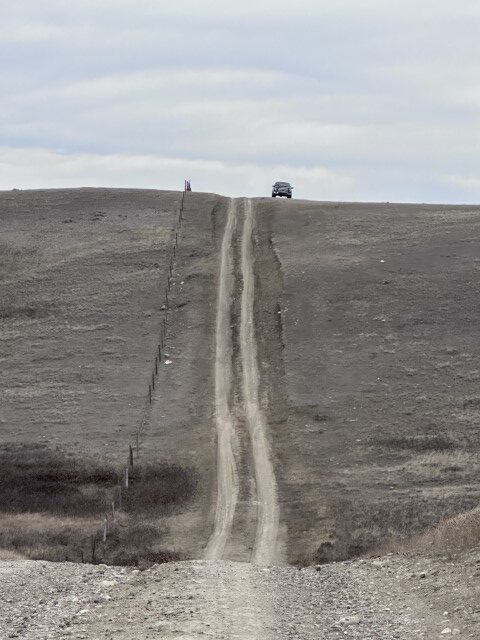
At one point, I left my truck parked on a hill and walked to a non-existent GPS waypoint. Fortunately, I encountered the only other person foolish enough to be in the middle of nowhere at this time of day. A very friendly rancher directed me to the Medicine Wheel site, which is located approximately 15km northeast of the GPS coordinates I had.
I arrived at the Medicine Wheel site well after sunrise and found a parking spot.
Finding a place to park my truck was not difficult, considering that the Iniskim site is 100,000 square acres and mine was the only vehicle there.
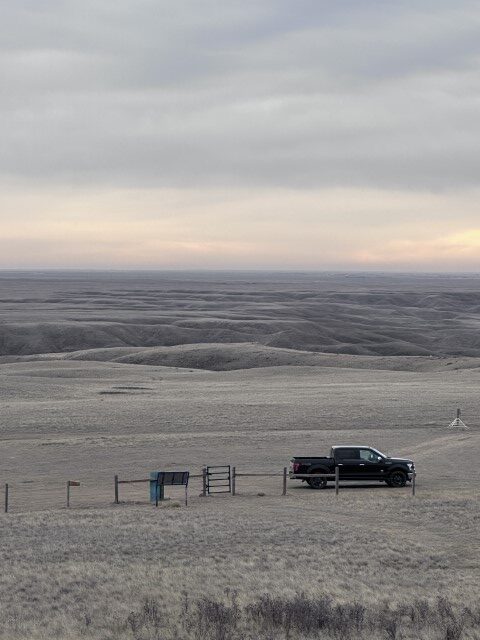
A swinging gate opened into a fenced area surrounding a hill where the Medicine Wheel is located. A cairn erected near the gate provided historical information and government rules and regulations concerning the site.
“This place is sacred. Thou shalt not steal rocks, nor present a fire hazard, under penalty of Alberta law.”
I read the history and cultural significance of the medicine wheel with interest. As I finished, I noticed a plywood box to the right of the cairn, with “Guestbook” written on it. The box had a hinged wooden top, latched with fencing wire wrapped around a screw.
I intended to sign my name in the book, so I unwound the wire latch and opened the box. As I did, I was confronted with a pleasing, aromatic jolt to my senses.
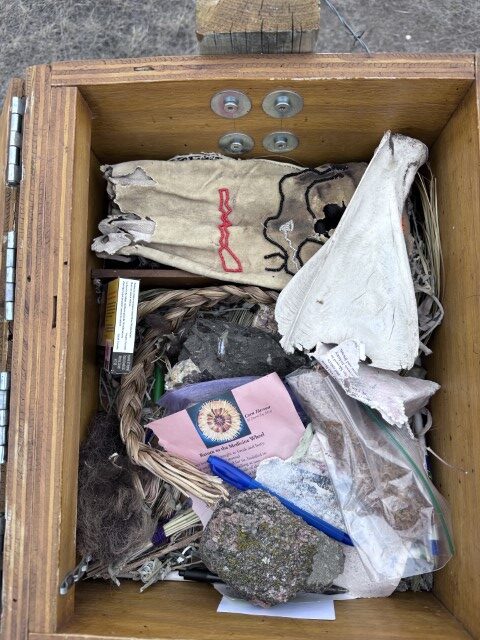
It is customary to offer tobacco, sage, sweetgrass, buffalo hair, leather, bones, cloth, or other offerings when you visit the Medicine Wheel site. The “Guestbook” box is where these offerings are placed.
The combined aroma of prairie herbs and artefacts caused a rush of emotion. This is the smell of the world of the Blackfoot people!
The aroma emanating from the offering box is part of the medicine I was seeking, but so is the vista. As I climbed the hill toward the Medicine Wheel site, the entirety of the Blackfoot Nation unfolded around me. When I reached the peak, I could see to the horizon in every direction. West to the mountains, South to Montana Territory, and North to the Kisiskatchewanisipi River and beyond. To the East, I could see as far as where the horizon spills over the curvature of the earth.
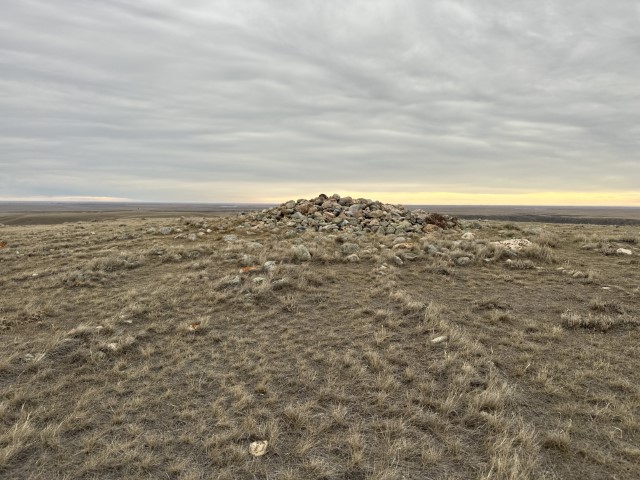
A traditional hunter standing at this point would be able to see his entire ecosphere, and his nation’s livelihood. A buffalo herd within a 50-mile radius in any direction would be detectable, an achievable food source for his people.
Not much wonder the Blackfoot people consider this site sacred.
The medicine wheel consists of a large pile of stones at the crest of the hill. The pile isn’t high, maybe 2 to 3 feet at the centre, but the circumference covers a large area. Radiating out from the centre are 28 spokes, which extend to a concentric ring of stones surrounding the entire site.
There are paths leading to auxiliary rock piles, each pointed in the direction of one of the four winds.
I spent an hour and a half at the site, mesmerized by the power of the land, the sky, the wind, and the ancient stones.
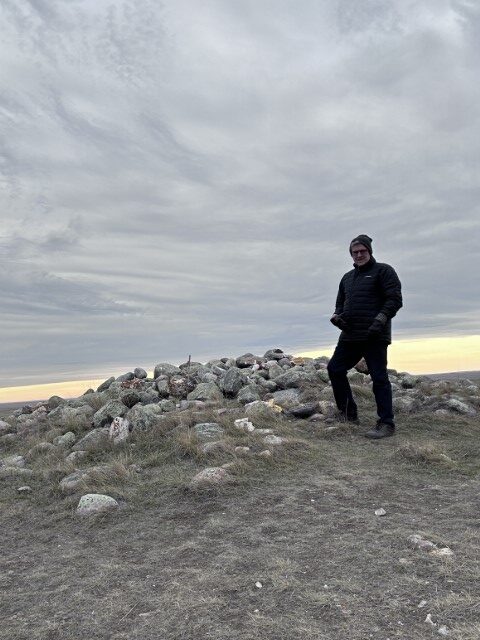
As I retreated to my truck, it occurred to me that I should have brought an offering to place at the site. I don’t use tobacco, and any spices I own are in a drawer waiting to season a turkey dinner.
I rummaged through the consul of my truck and came up with a piece of cloth, which would serve as an offering (I will find something else to clean my glasses with). As I placed the square bit of soft cloth in the corner of the offering box, I took another glorious whiff of the prairie emanating from the articles inside.
I can only speculate on what this site meant to the people who placed the stones here, but there is something transcendent about being high on a hill in this vast treeless plain, looking at the world in every direction, seeing the badger, the antelope, the deer, the hawk, the coyote, and once, the buffalo. Iniskim Umappi is virtually unchanged since the first Blackfoot man placed a stone on this hill, more than 5000 years ago.
There is healing in this place. Iniskim Umappi is powerful …
… Medicine
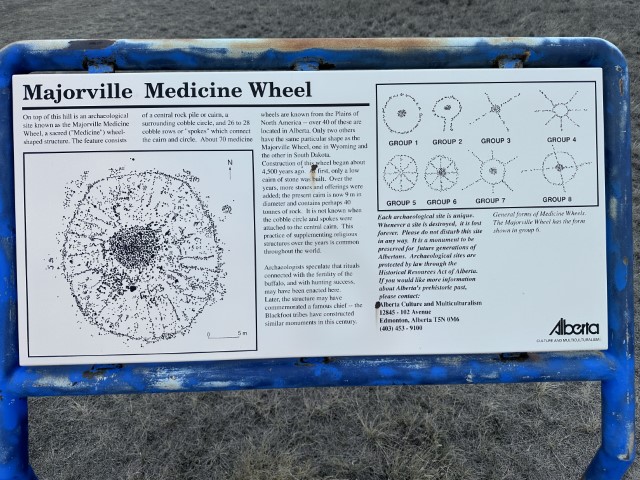


Leave a Reply